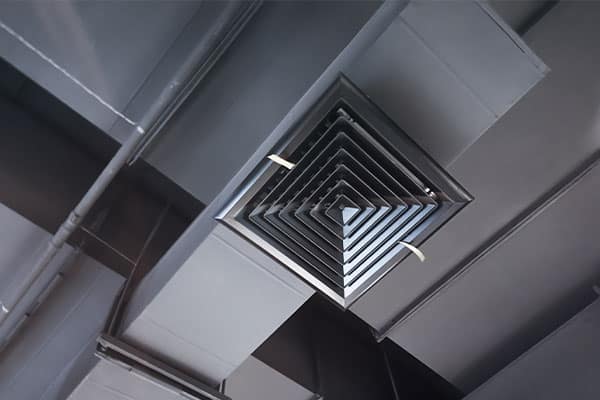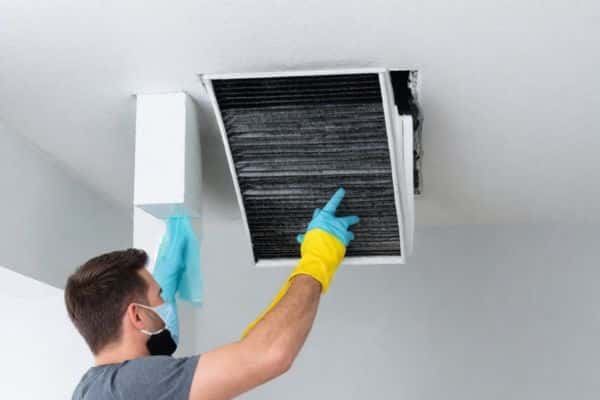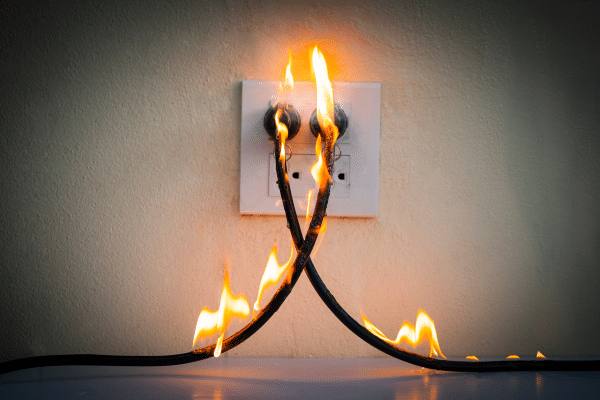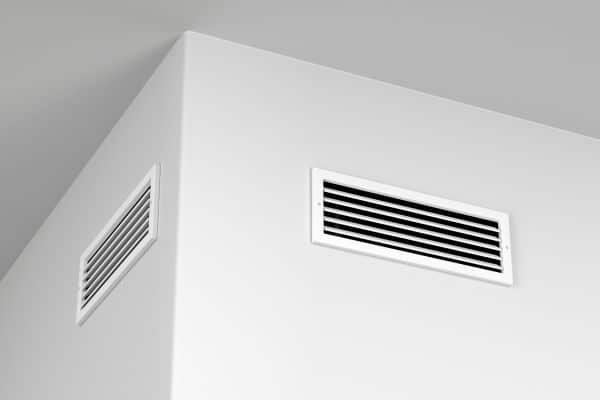Indoor air quality directly influences people's overall well-being. Dust, pollutants, and even mold can develop in filthy air ducts, reducing indoor air quality and perhaps leading to breathing problems.
Keeping a pleasant living space at home needs periodic cleaning of the air ducts. But how will this key service perform in the future?
An era where AI, robots, and remote surveillance indoor air quality inspection are not too distant.

Consider a small robot traversing the complicated pathway of your air duct carrying brushes, cameras, and a powerful vacuum.
Robotic cleaning machines are getting closer to the real world. These little machines can get into parts that are challenging to reach for conventional techniques and fit into small spaces.
The inside view of your air duct can be seen clearly due to its high-resolution camera. This additionally makes it easy for centered cleaning and makes sure that there are not any unnoticed areas with dust.

Air duct cleaning is getting even more centered on Artificial Intelligence. AI-based inspection devices equipped with complex algorithms, analyze video footage collected during the cleaning processes.
These kinds of devices can identify areas like potential lockages, mold growth, and loose debris with outstanding precision.
As it turned out, employees can focus on the most important areas and execute better cleaning strategies.
Being active is the key to the future success of air duct cleaning. HVAC experts can track the state of your air duct with the assistance of remote monitoring and diagnostics. Even in their absence, they retain the ability to perform this action.
This system collects data regarding temperature, humidity, airflow, and pressure using sensors that are placed carefully inside the duct.
Evaluation of this data allows employees to spot potential problems before they escalate into costly repairs.

Technology is changing constantly. However, it is also transforming the overall experience that clients enjoy.
You can schedule cleaning at your convenience time with an automated online booking service. You can consult with an expert technician about your concerns through virtual consultations.
Therefore, you can avoid in-person scheduling and save plenty of time.
While technology offers clear benefits, it's important to acknowledge potential drawbacks.
Implementing new robotic cleaning systems and AI inspection tools may come at a higher initial cost compared to traditional methods.
Additionally, as with any new technology, there may be a learning curve for technicians using these new systems.
A wonderful change will soon happen in the duct cleaning business. Advancements in AI, robotics, and remote monitoring are driving a future focused on productivity, accuracy, and preventive care.
For property owners, these technological advancements ensure cleaner air and better-performing HVAC systems.
So, the next time you think about cleaning your air duct, remember that modern technology keeps your air clean and your lungs healthy.
High-quality indoor air is necessary for a healthy home and workplace. The state of your ventilation system is just one of the factors often overlooked in this matter.
Cleaning vents frequently is important. It protects against the formation of clumps of debris that can harm the system's functionality by safeguarding that the air flowing through the vents is clean and allergy-free.

The process of cleaning vents includes getting pollutants, dust, and debris out of HVAC systems' air ducts. There is much more to this process than simply cleaning the visible vents.
It consists of all the primary duct trunks and entry and exit points on the duct system.
Pollutants and allergens in your residence spread slower when the ducts are clean. People who struggle with allergies and breathing problems will find those particularly useful.
Your HVAC system may experience pressure from blocked or dirty ducts, which may result in higher utility bills. An effective system involves one that has clean ducts.
Regular cleaning will make your HVAC system perform better through minimizing the damage caused by dust and dirt buildup.

The National Air Duct Cleaners Association (NADCA) advises that you have your air duct cleaned at least once every 3 to 5 years.
However, this can vary based on several factors, such as allergies, smoking, pet ownership, recent renovation, and overall cleanliness.
The HVAC system must be carefully examined to identify any major issues or blockages. Workers can use cameras to inspect the duct, determine the level of buildup, and identify potential issues
Multiple tools are used based on the results of the assessment. Vacuum cleaners and brushes are helpful duct cleaning tools. Specific tools such as pneumatic devices are also used to get rid of dust and debris.
Powerful vacuum cleaners are used to eliminate loose debris. Usually, trucks mount the vacuum, which is connected to the ducting to remove loose dust and debris and provide strong suction.
A rotating brush can be used to clean the outer layer of the duct and remove debris buildup from the duct walls.
After the particles are eliminated, the ducts may need to be deodorized or sanitized. This is an important phase in removing microbiological substances like bacteria, viruses, and mold.

Picture this, the air quality inside your home is expected to drop. Even people in good health feel drained when their allergic symptoms get worse.
And what's the reason behind this? Perhaps the cause of this reason can be the vent is blocked with pet dander, pollen, and dust. Because of these hidden allergies, your mental and physical health can be impacted badly.
Cleaning air ducts with expert professionals can truly change everything. After cleaning the air duct with professionals, some families experienced enormous changes in their physical wellness and indoor air quality.
To experience the impact of clean air vents, schedule an expert assessment as soon as possible.
Vent cleaning is a must for a durable and longer-lasting HVAC system and an improved home. It increases system performance and air quality.
Understanding what's in the air you breathe inside your house can significantly affect your standard of life and energy bills. So, Would you consider having a professional inspect your HVAC system this year?
When you consider saving energy, have you ever questioned why your utility bills continue to increase? Your air duct problems may be the issue.
Let’s go through five common air duct issues that can increase your utility bills.

Consider a leaky pipe that constantly wastes water all the time. Similarly, leaky air ducts let valuable conditioned air escape.
This wastes energy and can make living areas uncomfortable. This leads to higher utility bills because the HVAC system has to function more diligently to keep the temperature you wish for.
Leaks can happen at duct connections or edges as a consequence of pest infestation.
Identify Leaks: To identify leaks, hiring a professional is recommended. Professionals use methods like visual inspection, pressure testing, and thermal imaging to detect leaks in air ducts.
They check for signs of damage, such as holes or loose connections, and pressurize the duct system to identify areas where air is escaping.
Solution: Professionals can seal the leaks using mastic or metal-backed tape to ensure a tight seal.
They may also repair or replace damaged duct sections if needed. Regular maintenance, including inspections and cleaning, helps prevent future leaks and ensures efficient airflow throughout the HVAC system.
A poor duct design can make your home’s inefficiency worse. Issues like improper sizing, excessive bends, and poor design can limit airflow and destabilize the natural balance of your HVAC system.
As a result, your system must work harder to distribute conditioned air evenly, leading to higher energy bills.
Example: Consider a maze with multiple dead ends versus a straight path to your destination.
A well-designed duct system is like a straightforward route—it allows air to flow freely and efficiently, minimizing energy waste along the way.
Solution: To fix poor duct design, consult an HVAC professional to evaluate your ductwork and identify any issues.
They can make necessary adjustments such as resizing ducts or removing bends to improve airflow efficiency.
Regular maintenance and upgrades to high-efficiency equipment can also help optimize your duct system for better energy savings.

A collection of connected channels is known as a duct network. Cooled air leaks into unapproved regions if any parts break or split up.
This is similar to having a loose garden hose connection: water pours all over but not where it’s meant to be. Disconnected ducts can result in mold development and moisture problems along with energy waste.
Signs of Disconnected Ducts: Disconnected ducts can be identified by crackling noise near ductwork, notably different temperature rooms, and unresolved dust and mold growth.
Solution: Reconnecting disconnected ducts needs an expert assessment. For the maximum and optimal airflow, they will make sure the reconnection is safe, right, and proper.
Blocked or obstructed air ducts can limit the smooth flow of air throughout your home.
Restricted airflow, caused by factors like furniture placement, debris buildup, or improper duct design, makes your HVAC system run longer to reach the desired temperature.
This extended operation results in higher energy consumption.
Example: Picture a scenario where you are trying to breathe through a straw versus taking a deep breath.
Restricted airflow in your air ducts is like trying to breathe through a straw—it requires more effort and energy to achieve the same result.
Solution: To solve restricted airflow in your air ducts, start by removing furniture or debris blocking the vents. Next, ensure that all vents and registers are fully open and clear to allow for maximum airflow.
Lastly, consider consulting with a professional HVAC technician to assess and optimize your duct system for improved airflow throughout your home.

Undersized ducts are poor at releasing conditioned air, just like tiny pipes. In older properties or during repairs, where the ductwork wasn’t designed for increased heating and cooling requirements, this is a frequent issue.
The HVAC system needs to operate longer hours to cover up for undersized ducts which increases energy prices and can cause pressure on the equipment.
Signs of Undersized Ducts: Weak vent airflow and insufficient temperature are indications of undersized ducts. Another indication is when the air conditioner operates constantly but fails to attain the right temperature.
Solution: An expert in HVAC maintenance can offer low-cost options for replacing undersized ducts which can enhance performance and airflow.
Managing these five common issues with air ducts can improve the overall energy productivity in your home.
This can save hundreds of dollars on yearly utility bills. Keep in mind that having effectively maintained air ducts serves to both a more affordable and pleasant living space.
So, don’t let your air duct problems turn into hidden energy vampires, and schedule a professional.
After an exhausting day, you feel happy to be in your place when you return home. But instead of fresh air, you're greeted by a stale, dusty feeling.
This could be an indication that your walls might have dirty and unclean air ducts hidden inside.
Unclean air ducts, even though they are invisible to the eye, can majorly impact one's mental and physical well-being.
Let’s find out why keeping clean air ducts is so important for healthy living and why unclean air ducts can impact the health of your family.

The HVAC system (heating, ventilation, and air conditioning) in your residence uses air ducts as a pathway.
However, as time passes, they can gather pet dander, pollen, dust, and mold spores. These allergens circulate in your living space, where your HVAC system functions.
This can result in a runny nose, itchy eyes, coughing, sneezing along with other allergy symptoms.
If you are suffering from asthma or allergies, dirty air ducts can worsen your symptoms and cause repeated allergy reactions.
Bacteria and viruses can also be detected in dirty air ducts, making air ducts an ideal place for allergens. As these viruses move around your house, you inhale them.
This can put your body at risk for respiratory illnesses like the flu, the common cold, and even bronchitis. Picture this:
You’re not exactly about the cause of why you feel a little under the weather. It can be the consequence of being around airborne bacteria that get caught in your air duct continuously.
Dirty air ducts can have numerous other adverse impacts besides allergy symptoms and breathing issues. Research has shown a connection between low indoor air quality and headaches, migraines, tiredness, difficulty focusing, and more.
Your overall strength and energy could be impacted if you are constantly breathing pollutants.

How can you tell if your air ducts need cleaning? Here are a few indications to be aware of:
There are multiple benefits of regular air duct cleaning. Some of the benefits are:
To maintain healthy aid ducts, here are some tips to keep your air ducts clean:
Maintaining clean air ducts is an investment in your overall health and well-being rather than just an issue of comfort.
Preventative steps and routine cleaning ensure fresh, allergen-free air at home. For air duct cleaning services and indoor air quality advice, you can reach out to All City Duct Cleaning.
Remember, a healthy home environment starts with clean air ducts. So, breathe easy and take action today.
Nowadays, everyone is inventing conspiracy theories, rumors, and myths to create sensationalism and spread misinformation.
In this case, duct cleaning has quite a lot of misinformation circling the internet. We call them myths, and busting them is like a walk in the park.
Let’s go over some of these myths that are causing more harm than good, stopping people from cleaning their ducts and actually allowing damage and diseases to ravage these uncleaned ducts.

Preposterous rumors circulate best, and for those who know how air ducts work, they are nothing but entertainment.
However, for the misinformed, we recommend you pay heed to these otherworldly claims lacking scientific reasoning or logic.
Let’s debunk these air duct cleaning myths.
While that may be true, the effect of air duct cleaning has its limits. You can expect to see an improvement in air quality right after the cleaning, but if your duct has damaged units or a system malfunction, the signs won't show instantly.
If your duct cleaner suggests changing a component, he is trying to fix a major issue, not swindle your money. A faulty furnace may cost a few hundred to fix, but a raging fire will cost a thousandfold in damage.
Warning—Duct cleaning is not enough. Request your duct cleaner for a deeper inspection of all components, making sure every section is fine-tuned.
If your HVAC technician suggests changing or repairing components, follow their professional recommendation.
Having your ducts cleaned once a year is not too much to ask. It is mandatory, so the myth goes. If we ignore all environmental factors, the age and size of the ductwork, the climate of the region, and previously repaired parts, it makes sense to have yearly duct cleaning.
Put all these factors into play, and you might need 3 a year, with mandatory inspections.
The standard duct cleaning routine includes 2 yearly cleaning sessions. One before summer and one before winter.
We've already discussed the best time to clean your air ducts in detail.

Professionals discourage DIY duct cleaning, and surprisingly, it's not because it stops their revenue stream. People wouldn't need professional duct cleaners if it were such a viable option.
The cost of tools and the risks involved while cleaning heavily weigh against DIY duct cleaning.
Warning - Do not attempt duct cleaning on your own without professional tools or proper knowledge of their usage.
Always rely on consulting professionals. Understand the Pros and Cons of hiring professionals vs DIY duct cleaning.
Cleaner air means better health, and that is enough evidence that supports duct cleaning as a necessity.
Would you rather breathe in hot, musty, and humid air that’s teeming with pollutants or get a whiff of freshness, and what effect would that have on yourself?
The answer is enough to bust the myth.
Warning—For immunologist enthusiasts suggesting that eliminating natural air results in weaker immune systems, people get their healthy dose of pathogens that enhance immune systems from the outdoors.
You need a clean environment to rest, recover, and strengthen your immune system with the specimen you collected. Clean your air ducts routinely for better health.
While dirty air filters contribute to the clogging of sections of the HVAC system, they don’t stand as the sole reason for cleaner air. Changing them every once in a while keeps the air flowing clean.
Since its only function is to filter out the dust, it ends up collecting them pending cleaning or replacement.
Don’t worry about air filters. Professional HVAC technicians have air filters on their checklist and will clean/replace them whenever needed.
Duct cleaning is more than just air filters, and your duct cleaners can do the job just right!

Just because ducts are hiding behind walls and ceilings doesn’t mean a technician will need to rip everything apart. Professional duct cleaning involves the use of powerful vacuum cleaners with long bendy hoses that run deep into air ducts. The professional method of duct cleaning leaves zero collateral damage.
N.B - If your air ducts have been damaged and need replacement, your HVAC technician might need to take the covering apart. This is a process that involves zero collateral damage, and it is all an organized operation needing careful execution,
If you’re thinking about the 99% dust elimination statistic, you’d be wrong. The HVAC system removes airborne contaminants, provided that the source is eliminated.
If you’re smoking indoors, and expecting the air to remain clean, it will, but the source must be eliminated. Goes the same for sources of dust and debris, in which case, you’d need more frequent HVAC cleaning.
Warning - If air duct cleaning doesn’t improve air quality, contact your assigned HVAC technician to eliminate indoor sources of air contamination or ineffective duct cleaning processes.
Hire the right HVAC professional from the start to get the right quality of services.
New to duct cleaning with this weird myth? Duct cleaning doesn’t involve the use of toxic chemicals in general.
It may require a few chemicals for stain or rust removal, but the overall process is turning eco-friendly industrywide, eliminating the threat of toxic chemicals.
The majority of chemical use revolves around pest removal, disinfection, and sanitization of air ducts, and these are basic concoctions that break down organic compounds, and are considered safe.

This one is obvious for the open minded. Duct cleaners aren’t programmed bots, and each organization offers it’s own blend of personalized cleaning techniques.
Some are suitable for certain duct types, while others may focus more on maintaining the overall functionality of the HVAC system.
To know more on the specialization of duct cleaning companies, it is best to consult an industry expert who has it all figured out, or speak to every individual duct cleaning company representative and act upon the collected data.
Just because air ducts clean your air doesn’t mean they are self-cleaning. Such technology is still a thing of the future, and until then, manual duct cleaning is the best bet.
Your ducts function continuously all year round, and accumulate large quantities of dust, dirt, & dead insects. Give them some TLC with professional duct cleaning, and keep your lungs clean.
Imagine if a scam made an integral part of your general well-being which dominates the industry. Duct cleaning is as necessary for you as medical check-ups.
If you conduct regular cleaning and maintenance, which costs 10 times less than medical bills, you’ll instantly cut down a major chunk of your medical bills.
If you know the benefits of HVAC systems and the importance of duct cleaning, you’ll know it is a necessity.
Warning - Duct cleaning is a necessary & mandatory procedure upholding the high quality of breathable air inside homes.
There are countless facts that debunk the myth of duct cleaning being a scam. Do not pick up on unwarranted claims, and follow the advice of experts on scheduled duct cleaning.
Despite all these circulating myths, duct cleaning and maintenance stands as a steady bastion for enforcing better health, and cleaner air quality.
None of these silly claims have supporting evidence, and despite their existence, the duct cleaning industry thrives with momentum.
Haven’t cleaned your ducts in a while? Schedule an inspection with a professional today and protect your home from airborne contaminants, pathogens and diseases.
We’ve all heard that HVAC systems cause fires, but how true is this, and how do they all happen?
To answer this, let’s look at the most common and uncommon fire outbreaks caused by malfunctioning HVAC systems.
Before we dive in, we hope everyone understands that HVAC fires are caused by a lack of care and maintenance or other external freak incidents.
To keep things safe, schedule an appointment for an inspection right away!

A statistic by the U.S. Fire Administration states that 22% of all fires caused by HVAC malfunction are caused by electrical issues, mostly damaged wiring.
High temperatures can be generated by overloaded circuits, bad connections, and loose wires. If this heat continues circulating, it can ignite nearby objects and damage electrical parts.
For example, consider a loose wire connection inside the heater. The resistance generated by this connection increases the wire's temperature notably.
Once the wires' coating melts from the heat, it can ignite surrounding flammable substances, such as insulating material or dust clumps.
A very common phenomenon occurs when the heating is switched on after a long time of inactivity, burning the collected dust clumps.
This is a harmless occurrence for HVAC systems, but even for this, preventive measures are advised, specifically seasonal HVAC maintenance.

Unobstructed airflow is paramount for HVAC systems to function efficiently. However, blocked vents, filters, or dirty coils can severely limit airflow.
Due to this limitation, the system must work harder, increasing the likelihood of overheating parts like the blower motor or compressor.
Overheating can cause parts to fail and, in the most serious scenario, cause fire. Picture this: your AC is operating continuously on a hot summer day.
A clogged air filter blocks the proper flow of cool air. The compressor needs to work harder to compensate, causing stress on the motor. The motor could overheat, potentially causing a fire.

Broken or malfunctioning HVAC system components can also pose a fire risk. For example, a gas furnace’s broken heat exchanger can allow hot combustion gases to leak into the nearby atmosphere.
Because of these burning hot gases, nearby flammable substances can catch fire. Sparks can also be generated by air conditioners and leaky refrigerant lines when they come into contact with electrical parts.
It’s important to remember that periodic repairs can be beneficial in identifying and fixing these issues before they turn into fire hazards.
A trained HVAC expert can inspect the system for water leaks, cracks, or other potential problems.
Fire dangers can arise from incorrect HVAC system setup. For example, DIY installations can skip crucial steps or use components to cut corners.
This can result in broken electric wires, inadequate airflow, or overheating parts that might cause a fire.
Always ensure that your HVAC system has been set up by an authorized professional every time.
They have the skills and knowledge to ensure a safe and efficient installation.

Despite dirty coils and clogged filters, skipping regular checkups can create a possibility of fire risk in several ways.
Overheating can occur from outdated belts slipping and causing excessive friction. Further, excessive heat can arise from parts attaching and straining caused by lubrication points.
Also, dust and debris buildup inside the machine can act as a barrier, retaining heat near important parts.
Consider hiring someone with experience to perform regular HVAC maintenance. This must include an in-depth look at each part and any required lubrication, cleaning, and modifications.
While we’ve discussed the most common causes of fires involving HVAC systems, there are also a few uncommon causes.
The trick to active prevention lies in being mindful of your HVAC system. Since you’re indoors at any given time, you will obviously notice the changes in temperature, smell, or the overall performance of the HVAC system.
These could mean a lot, even after inspection and maintenance sessions.
To prevent excessive damage, it’s best to integrate fire alarms into your HVAC system through relay modules that shut off the entire system in the case of a fire.
Become aware of common causes and take steps to avoid them, and the possibility of an HVAC-related fire in your residence can be greatly reduced.
Remember that a well-maintained HVAC system plays an important role in both safety and comfort.